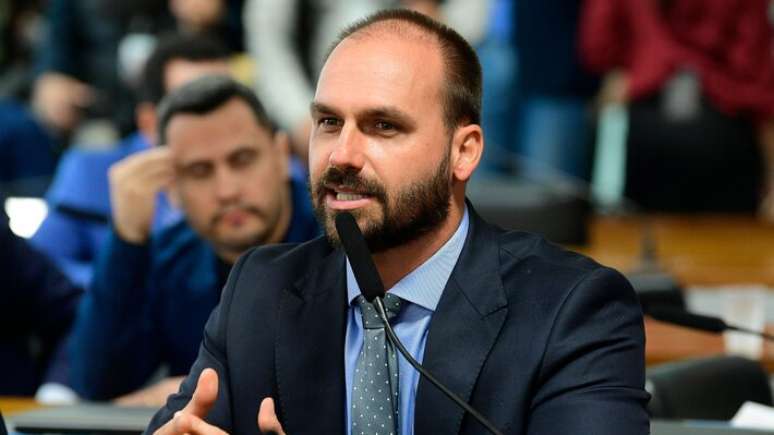The National Front of Mayors and Mayors (FNP) has prepared, at the request of BBC News Brasil, a study with official data from different sources, showing the expenditure of each Brazilian municipality per inhabitant in the sectors of health and education
All Brazilian municipalities must, according to the Federal Constitution, invest a minimum part of their resources in basic health and education services.
There is, however, huge inequality in how much and how it is spent.
The National Front of Mayors and Mayors (FNP) carried out, at the request of BBC News Brasil, a survey using official data from different sources, showing the expenditure of each Brazilian municipality per inhabitant in the sectors of health and education .
In the healthcare sector, we considered expenditure on public health actions and services, or ASPS, which include, for example, the payment of salaries, scientific and technological development, production, acquisition and distribution of service inputs healthcare.
In the education sector, expenditure on the maintenance and development of education (MDE) was taken into account, which includes, among others, the payment of teachers, training, construction and renovation of school buildings.
The survey also shows how much spending in these sectors represents each municipality’s total revenue and whether they meet the constitutional minimum of 15% in education and 25% in healthcare.
At the top of this “ranking” are the smallest cities, with up to 50 thousand inhabitants.
An example is Borá, in the hinterland of São Paulo, the second least populous city in the country, with just 907 inhabitants (more than Serra da Saudade, in Minas Gerais, with 833), which spends R$4,900 per person on health. In the city of Sao Paulo, in comparison, the value is R$1,400.
“It is normal that small cities spend more per inhabitant, precisely because these cities have a relatively larger (per inhabitant) budget,” says Kleber Castro, economic advisor at the FNP, which organized the data.
Castro says this larger budget is a consequence of shortcomings in the public revenue distribution system among federated entities.
While tax collections are concentrated in cities with greater economic activity, resource transfers end up benefiting smaller cities, the economist says.
But what are these transfers?
Many Brazilian municipalities, especially the smaller ones, cannot support themselves exclusively through their own tax collection and rely on transfers from states and the Union.
A study carried out by the Federation of Industries of the State of Rio de Janeiro (Firjan), with data from 2022, showed that more than half of the municipalities are in a critical situation in their ability to support their basic structure with their economic activity, as shown in a report by BBC News Brasil.
The Municipal Participation Fund (FPM), for example, is transferred from the Union to the municipalities and represents almost half of the revenue of cities with less than 10 thousand inhabitants, according to another study carried out by the FNP.
For the organization, the current mode of this transfer favors smaller cities, since the distribution model was created in another context, in the 1960s, with the aim of protecting smaller cities with a source of permanent and stable financing.
“It turns out that, since then, the economy has decentralized and the country’s demographic dynamics have changed, characterized by a reduction in the rural population share and a greater urban concentration, especially in large and medium-sized cities,” he says the organization.
Oil royalties
Economist Vladimir Fernandes Maciel, coordinator of the Mackenzie Center for Economic Freedom, points out that some of the municipalities at the top of the list with the highest expenditures rely on extra sources of revenue, such as oil royalties or financial compensation for mineral exploration.
An example is Maricá (RJ), with a per capita expenditure of R$ 23,300 in 2023.
According to a report by the newspaper O Globo, in 2023 the city received the highest number of royalties from the oil and gas extraction industry in the country, followed by Saquarema (R$1.7 billion) and Macaé (R$1.3 billion). billion R$), both in Rio de Janeiro. .
“In these locations, this additional revenue allows you to cover investments in different sectors, freeing up resources to increase spending on health and education,” explains Maciel.
He underlines that the analysis of the issue cannot be limited to the value of expenditure per inhabitant, but must also look for indicators that indicate the results obtained with the sums invested.
“Assessing the efficiency of public spending is essential for a complete and accurate analysis,” says the economist.
Greater public spending = better services?
Several studies have already compared the relationship between the increase in public spending, the efficiency of the services offered to the population and quality of life.
One of them, A broken social elevator? How to promote social mobility (A Broken Social Elevator? How to Promote Social Mobility), by the Organization for Economic Co-operation and Development (OECD), published in 2018, identified that countries that had previously spent more on education and healthcare public had greater social mobility – that is, the improvement of the socio-economic situation of families.
In this study, Brazil was the second worst in terms of social mobility among 30 countries.
The investigation sought to identify which elements guarantee families better living conditions and how public policies can promote them.
Health conditions have a significant impact on family income and children’s future outcomes, both because they can exclude someone from the labor market and because they mean more expenses for families, the report says.
In the field of education, the report examines a number of studies that have shown that public spending in the area has helped reduce inequality between rich and poor children.
“At least part of the reason why poorer children fall behind their wealthier peers in terms of academic achievement is because they attend different schools,” says the report, which points out that the schools that poorer students attend tend to have fewer resources.
But the OECD itself admits that this relationship between spending and quality is not direct, because it depends on how the resources have been used and whether the focus is on the most socially disadvantaged groups.
“The policy response is therefore not limited to spending more overall, but rather to direct spending towards effective programmes,” says the OECD.
Castro, of the FNP, adds that “there are places that spend less and have more quality, and there is also the opposite”.
“What is certain is that municipalities that receive more resources than they need, in general, tend to spend worse and waste more resources,” Castro says.
Economist Carla Beni, professor at the Fundação Getúlio Vargas (FGV), underlines that spending in municipalities must be accompanied by public policies adapted to the local reality.
“The more decisions and tools are generalized, the more mistakes are made. Each municipality has its own particularities. One is industrial, the other is more focused on trade or agriculture,” says Beni.
He also criticizes what he defines as the demonization of the public sector in Brazil, which calls for less state and more privatization.
“One of the foundations of fiscal policy is to promote the quality of public services to reduce inequalities of opportunity,” says Beni.
The president of the National Union of Municipal Educational Directors (UNDIME), Alessio Costa Lima, recalls that the main expenditure in the education sector is linked to personnel expenses, which represent almost 90% of the total.
“What varies from one municipality to another is the way in which the educational network is organized,” says Lima, citing the number of schools and teachers per school as an example.
He also points out that the level of training of network professionals can increase costs.
“There are municipalities where all network professionals have higher education and even postgraduate degrees,” Lima points out.
“The more qualified they are, the greater the investment made in these professionals’ paychecks.”
Lima, who is also the Minister of Education in Ibaretama, Ceará, says that care needs to be taken when directly linking increased spending to the quality of education.
“We cannot deny that the quality of education requires greater investments, because it does not depend only on the effort and goodwill of teachers, students and families. But the issue is not so linear,” says Lima.
“Many factors influence student achievement. The same policy, with the same amount of resources and applied to cities of the same size, can produce completely different results, for better or worse.”
Do parliamentary amendments reinforce inequality?
The president of the National Council of Municipal Secretariats of Health (Conasems), Hisham Hamida, states that the resources that finance healthcare today are not sufficient for the expenses of municipalities in this area.
“There is an underfunding, where I increasingly have an increase [de despesas] whether through the incorporation of new technologies, or through increased life expectancy, all of this has an impact on health,” says Hamida.
He also recalls that parliamentary amendments, proposed by federal deputies and senators, have also created disparities.
In 2024 alone, parliamentarians have committed more than R$13 billion for healthcare amendments, according to the InvestSUS panel.
In this mode, the deputies themselves choose where to allocate the resource.
“There is no technical criterion per capita or for health needs in that region. In most cases this amendment is indicated by a political-party affinity, a place that is the basis of that parliamentarian”, emphasizes Hamida.
“As a result, there is a tendency to increase this inequality. Those who have greater political influence will tend to get more amendments than those who do not.”
An article published in the journal Cadernos de Saúde Pública (CSP) in 2024 analyzed data from 2015 to 2020 and identified that there was “a large discrepancy in per capita values between municipalities of different population sizes” and that smaller cities were most favorites. The work was produced by researchers from the State University of Londrina, the Institute of Applied Economic Research and the Oswaldo Cruz Foundation.
The study says that instead of correcting inequalities, the amendments may increase them further.
“In the parliamentary amendments on primary healthcare (PHC), differences of up to 16 times in the per capita value were identified between municipalities with up to 5 thousand inhabitants and those with more than 500 thousand, highlighting the distortions caused by this form of resource transfer during the period evaluated,” the study reads.
Source: Terra
Rose James is a Gossipify movie and series reviewer known for her in-depth analysis and unique perspective on the latest releases. With a background in film studies, she provides engaging and informative reviews, and keeps readers up to date with industry trends and emerging talents.







